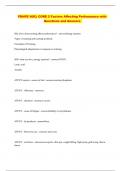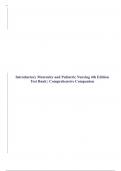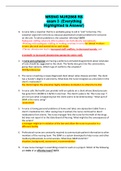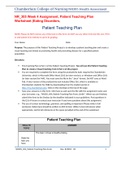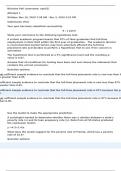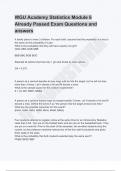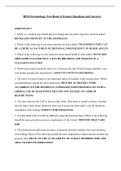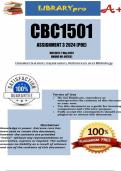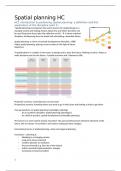Prüfung
PDHPE HSC; CORE 2 Factors Affecting Performance with Questions and Answers
- Kurs
- Hochschule
PDHPE HSC; CORE 2 Factors Affecting Performance with Questions and Answers SIQ: How does training affect performance? - answerEnergy systems Types of training and training methods Principles of Training Physiological adaptations in response to training SDP: what are the 3 energy systems? - an...
[ Mehr anzeigen ]
